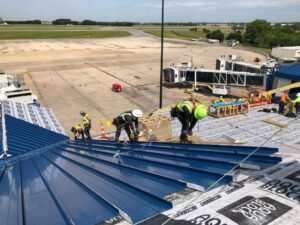Revitalizing Atlanta’s Westside: A Community Effort
Atlanta, a city often celebrated for its vibrant culture and thriving economy, has faced the quiet challenge of revitalizing some of its neighborhoods. Just a short drive from the bustling activity of Mercedes-Benz Stadium, the once lively communities of English Avenue and Vine City have fallen into disrepair. During the 1950s and 1960s, these neighborhoods were bustling hubs for Atlanta’s African American community, home to influential leaders like Martin Luther King Jr. and Maynard Jackson. However, over the decades, declining population numbers and poverty have taken a significant toll.
The Deteriorating Situation
By 2018, two-thirds of English Avenue had depopulated, leaving behind a landscape filled with abandoned and “blighted” properties. A recent city assessment identified a staggering 3,000 such properties across Atlanta, with around 540 located in English Avenue and Vine City alone. But there’s hope! Local nonprofits are teaming up with city officials to battle this blight and bring back the vibrancy of these neighborhoods while honoring their legacy.
A Collective Approach to Change
On September 20, local philanthropists and community advocates from the Blank Family Foundation and the Westside Future Fund took a meaningful tour of homes that have been redeveloped in recent years. The Blank Foundation, founded by co-founder of The Home Depot, Arthur Blank, has invested an impressive $106 million into the Westside since 2007 to promote economic stability and affordable housing for long-term residents.
As Daniel Shoy, the Managing Director for Westside Youth Development, highlights: “We thought it imperative to support nonprofit developers who often lack the capital and networks that for-profits have.” So, what does this supportive structure look like? It’s all about collaboration and unity.
Building a Brighter Future
The Westside Future Fund has made strides by focusing on four target areas: mixed-use housing, cradle-to-grave education, safety and security, and community health and wellness. They recently made a significant commitment of $10 million to provide affordable housing by establishing 1,750 new units. The organization has passionately invested over $25 million to buy and renovate properties in need, offering affordable solutions to legacy residents.
Rachel Carey, Chief Real Estate Officer at the Westside Future Fund, explains the philosophy behind their initiatives: “We focus on development clusters to tackle blight strategically.” For instance, James P. Brawley Drive has been identified as a critical area in this ongoing struggle. “This is the blight that is holding the neighborhood back,” Carey points out.
Preserving History While Looking Ahead
One important aspect of this redevelopment effort is maintaining the historical character of the homes. Instead of knocking down dilapidated structures to make way for modern designs, the focus is on rehabilitation. The team evaluates what can be salvaged from these neglected homes, leading to a beautiful mix of new and classic bungalows that visually tell the story of the neighborhood.
For instance, at 395 James P. Brawley Dr., a complex with 35 units was revamped to offer diverse family accessibility—transforming some units into three-bedrooms while keeping the overall structure intact. “It’s about building homes that honor the original architecture,” Carey stated.
Reviving Community Spaces
Yet, revitalization goes beyond housing. The area also plans to repurpose a historic yellow store that was once filled with local businesses. Originally opened in 1911, the store fell into disrepair and became an epicenter for crime. The Westside Future Fund stepped in to acquire it, aiming to replace past negativity with new commercial opportunities that can energize the neighborhood.
Embracing Local Culture
Community developers like Jesse Wiles are spearheading projects that celebrate the rich history embedded in the area. He is working on redeveloping a property next to the former home of Martin Luther King Jr. that also belonged to Atlanta’s first Black mayor, Maynard Jackson Jr. Due to structural issues, the building faced demolition, but local outcry saved it, allowing Wiles to integrate a historic designation into the development plan. “This transformation is about honoring the culture and history of the residents right here,” he says.
The Bigger Picture: Inclusion and Opportunity
As city leaders and nonprofits work together to tackle the challenges of revitalization, one major goal remains: to preserve the homes and neighborhoods for current and future generations while encouraging investment in the local economy. The city has recently doubled down on its efforts against blight, giving municipal judges more power to impose higher property taxes on neglected spots and even seizing control of properties that threaten community health.
To combat the challenges of displacement while fostering development, Westside Future Fund President and CEO John Ahmann emphasizes the importance of an inclusive approach. “It’s about finding a balance—how do we get new residents while also welcoming back those who left?” he notes.
As change arrives, it’s heartening to see that the revitalization of neighborhoods like English Avenue and Vine City is not just about bricks and mortar; it’s about community, culture, and a renewed hope for the future. Thanks to the collaborative efforts of dedicated individuals and organizations, Atlanta’s Westside is beginning to come to life again—one bungalow at a time.







